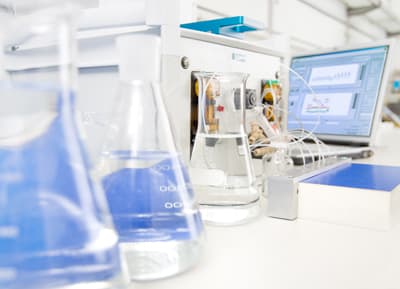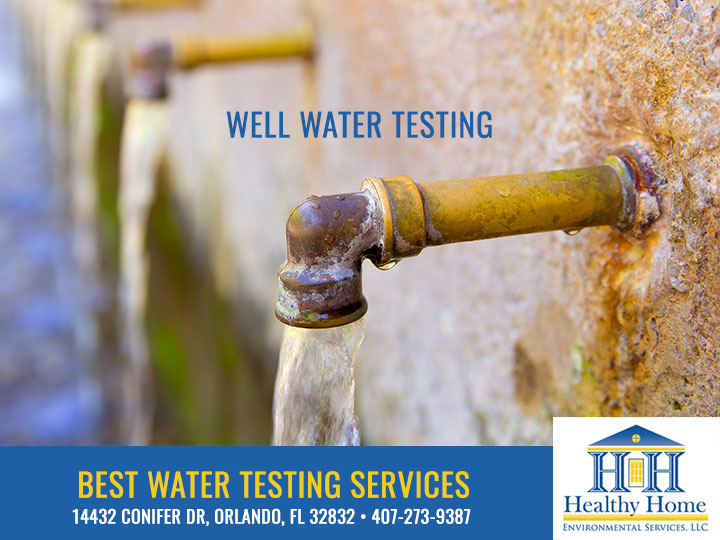Why You Need To Select Our Water Testing Service for Your Home
Why You Need To Select Our Water Testing Service for Your Home
Blog Article
Recognize the Importance of Water Testing in Keeping Conformity With Wellness Standards
In the world of public health and wellness, understanding the relevance of water testing is essential for maintaining conformity with rigid health and wellness standards established forth by authoritative bodies like the That and EPA. What are the accurate techniques utilized in water screening, and just how do they make sure that our most important source remains unpolluted?
Secret Wellness Specifications for Water
Ensuring the security and quality of alcohol consumption water is vital, as it directly affects public health. Rigorous health and wellness standards are developed to protect people from waterborne diseases and contaminants that can result in damaging health and wellness effects. The World Health Organization (THAT) and national companies like the Epa (EPA) in the United States established standards and regulatory restrictions for different physical, chemical, and organic parameters in alcohol consumption water.
These requirements are based on considerable scientific research and are occasionally reviewed to integrate brand-new findings and technical developments. Secret parameters consist of microbial contaminants such as germs and infections, chemical toxins like lead and arsenic, and physical features such as turbidity and pH degrees. Compliance with these standards guarantees that water is without hazardous compounds and is visually pleasing to the customer.
Water screening plays a crucial function in confirming compliance with these health and wellness criteria. Regular tracking and screening assistance determine possible concerns before they position a substantial health danger, allowing for timely treatment and removal. By following these standards, water service providers can maintain public self-confidence in the safety and security of the neighborhood's supply of water, thus safeguarding public wellness successfully.
Typical Contaminants Spotted
When examining water quality, what are the most widespread pollutants that often tend to be spotted? Microbial virus, including microorganisms like Escherichia coli and protozoans such as Giardia and Cryptosporidium, are regularly discovered in water sources, posturing considerable health and wellness threats if consumed.
Chemical pollutants are additionally a primary issue. Nitrates, usually resulting from agricultural plant foods, can bring about major health and wellness concerns, particularly in infants. Heavy metals such as lead, arsenic, and mercury, usually presented via commercial discharge or natural mineral deposits, can have long-lasting poisonous effects. Volatile organic compounds (VOCs) and pesticides, by-products of farming practices and industrial activities, additional add to water contamination.
Inorganic compounds such as fluoride and chlorine, although occasionally purposefully included in water for health benefits, can end up being troublesome at raised levels. Arising impurities, consisting of pharmaceuticals and personal treatment products, are significantly being spotted, raising concerns about their prospective impact on human wellness and ecological communities. Attending to these contaminants is vital for safeguarding public wellness and guaranteeing water quality conformity.
Methods of Water Testing
Water screening's precision is important for determining impurities and making sure security compliance. Well water testing find out services. To accomplish accurate outcomes, various techniques are used, each tailored to detect certain pollutants and align with governing requirements. One widespread method is spectrophotometry, which measures the absorption of light by chemical compounds in the water, therefore determining components like phosphates and nitrates. This method is helpful for its sensitivity and specificity.
Chromatography is another innovative technique used, especially for natural impurities. By separating mixes into specific parts, it permits for detailed analysis of complicated contaminants. Gas chromatography and fluid chromatography are generally made use of versions, each suited for different compound types.
Microbiological testing is necessary for spotting microorganisms such as germs, viruses, and protozoa. Methods such as membrane filtering and multiple-tube fermentation are used to culture and identify microbial presence. These techniques are important in safeguarding public health by guaranteeing microbial safety and security.

Benefits of Routine Screening
Recognizing the numerous approaches of water screening highlights the necessity of normal screening practices to keep water top quality. Routine water testing acts as an aggressive step to identify possible pollutants before they rise into major wellness dangers. By consistently checking water high quality, organizations can identify contaminants such as bacteria, hefty metals, and chemical deposits early, enabling prompt interventions that protect against health and wellness risks and pricey remediation efforts.

In addition, regular screening guarantees that water supply follow recognized wellness standards and laws. This conformity is critical for preventing legal penalties and keeping the depend on of customers and stakeholders. Constant additional reading water quality assessments help recognize trends or variations in water structure, supplying valuable data that can guide functional choices and source management techniques.
In fields such as metropolitan water food, health care, and supply processing, maintaining high water top quality criteria is important to safeguarding public health. Overall, the advantages of routine water testing expand past compliance, improving operational efficiency, public safety and security, and environmental stewardship.
Tips to Make Sure Compliance
To make certain compliance with water top quality policies, companies should implement a structured strategy encompassing both preventative my review here and corrective actions. A thorough danger analysis should be carried out to identify potential contamination resources and vulnerabilities within the water system. This analysis informs the advancement of a customized water management strategy that outlines certain examining protocols, frequency, and specifications required to satisfy governing standards.
Subsequent to the preparation stage, organizations need to establish a timetable for regular water screening that sticks to both national and regional standards. Making use of accredited laboratories makes certain the accuracy and integrity of test results. Any kind of variances from appropriate water quality requirements need to motivate immediate restorative activities, such as system cleaning, repair work, or modifications in therapy processes.
Moreover, preserving thorough documents of all screening activities, results, and corrective actions is important for showing conformity during audits and examinations. Normal training and updates for team entailed in water monitoring procedures are vital to ensure they recognize present laws and best practices.
Final Thought
Routine water screening is vital for maintaining compliance with health requirements established by organizations such as That and EPA. Proactive surveillance safeguards public wellness, supports governing compliance, and fosters self-confidence in water high quality monitoring.
In the realm of public wellness, comprehending the importance of water screening is essential for keeping compliance with rigorous health and wellness criteria established forth by authoritative bodies like the That and EPA. By sticking to these requirements, water providers can preserve public self-confidence in the safety of the community's water supply, consequently safeguarding public health and wellness efficiently.

In sectors such as municipal water food, supply, and medical care handling, preserving high water high quality standards is integral to protecting public health.
Report this page